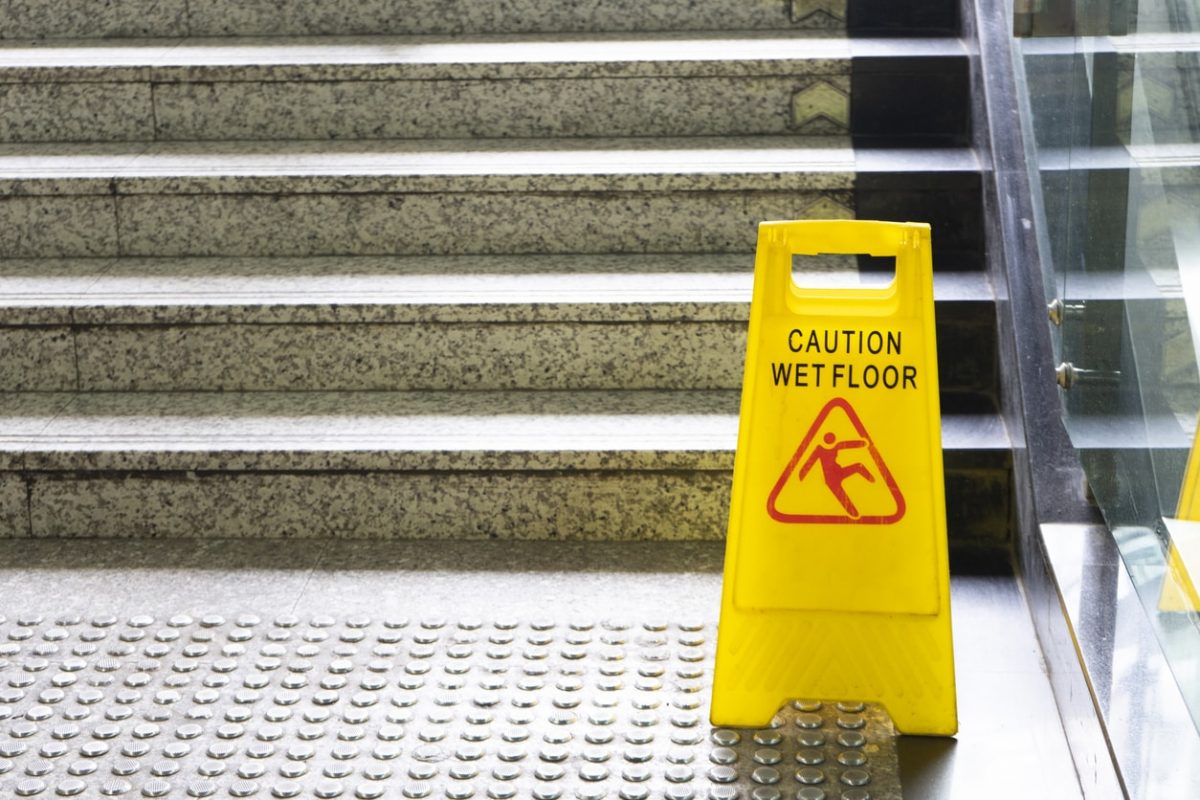How to Prevent Slip and Fall Accidents at Your Establishment

Slip and fall accidents are a common occurrence in the hospitality industry. However, the right cleaning protocols, equipment maintenance, awareness efforts, footwear, and training can make all the difference in reducing the risk (and severity) of these accidents. It’s no exaggeration to say that proper accident prevention techniques can save a business. But what are these techniques?
Risk Factors
The first step to mitigating the risk of these accidents is understanding the common risk factors that can lead to them.
- Surface composition. How much slip resistance does the floor have when dry and properly cleaned?
- Foreign substances. Ice, grease and water are major contributors to hazardous floors.
- Surface conditions. Raised or recessed edges, loose carpeting, soiling and overall cleanliness of the floor can all be factors.
- Surface changes. Walking from a carpeted floor to a tile floor can cause someone to trip.
- Level changes. Unexpected slopes in the floor or raises of three steps or less can contribute to accidents.
- Obstructions. Extension cords, hoses and even floor-level “wet floor” signs can make for an unsafe obstacle course.
- Visibility. Poor lighting, glare, shadows, too-bright lights and color contrasts all can impede visibility.
- Human factors. Variables physical abilities, physical challenges, shoe types and familiarity with a certain area all make a difference.
- Stairs. Falls from stairs typically result in the most serious injuries.
- Unusual features. Anything that could distract a walker (loud noises, flashing lights, etc.).
Exercise Caution Where it Counts
Utilize strips that are made to “snap” mats together, so that workers aren’t traveling between different levels (flat, slick floor versus raised, non-slip mat). Use clean water and appropriate cleaning products to mop up water, grease, food and any other spills in a timely manner. Swiping greasy, dirty water back over the floor won’t make the floor less slippery or clean. Certain cleaning products contain additives that do double duty, cleaning the floor and providing some traction.
What makes floors slippery? Water, grease, condensation, spilled food? Try to eliminate or manage whatever that slip hazard is. Keep floors as dry and clean as possible and encourage employees to mop up spills immediately. Employees are the first line of defense in reducing slip hazards. Also, slip-resistant shoes are a must!
Entryways, where customers come in with wet shoes or dripping umbrellas, can be hazardous to both employees and customers. Special mats and disposable “sleeves” for umbrellas can help this.
Bathrooms can also be trouble spots. Towel dispensers should be next to sinks, so that hand washers aren’t dripping water across the bathroom floor on the way to grab a towel. Assign an employee to complete frequent bathroom checks to keep everything clean, dry, and orderly.
Remind employees to always be aware, verbally and with signage, particularly in areas where spills are common (near walk-in coolers, dishwashing areas, and ice machines). Are employees moving quickly, carrying hot items, or handling a stack of wet plates? Employees should use their peripheral vision to see what’s coming at them from either side and to let others know when they’re walking behind them.
Have standard operating procedures (SOPs) for everything from cleaning the floors and servicing the mats to emptying fryers, cleaning slicers and taking out the garbage. Keep accident prevent techniques highly visible to employees while they are doing those tasks.
About Daniels Insurance, Inc.
At Daniels Insurance, Inc., we have a unique understanding of the risks that people like you face on a regular basis. With the backing of our comprehensive coverages and our dedication to customer service and quick claims resolution, your business will be fully protected. For more information, contact us today at (855) 565-7616.
